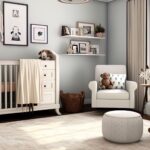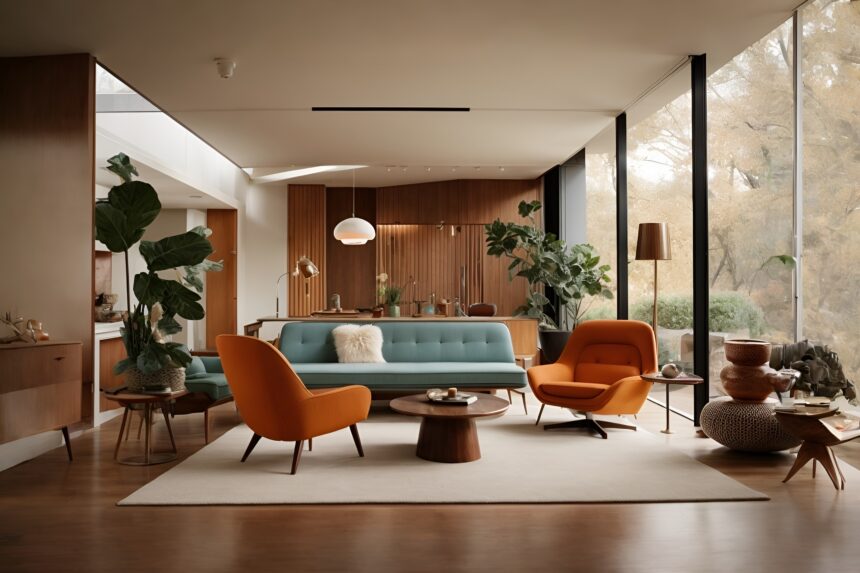In the ever-evolving landscape of interior design, certain styles withstand the test of time, and Mid-Century Modern design is undoubtedly one of them. Rooted in the mid-20th century, this aesthetic has experienced a resurgence in recent years, capturing the imaginations of homeowners and designers alike. In this exploration, we delve into the heart of Mid-Century Modern design, uncovering its historical roots, discussing the enduring appeal of its aesthetics, and providing a guide to incorporating timeless furnishings into a stylish and sophisticated home.
Understanding Mid-Century Modern Design
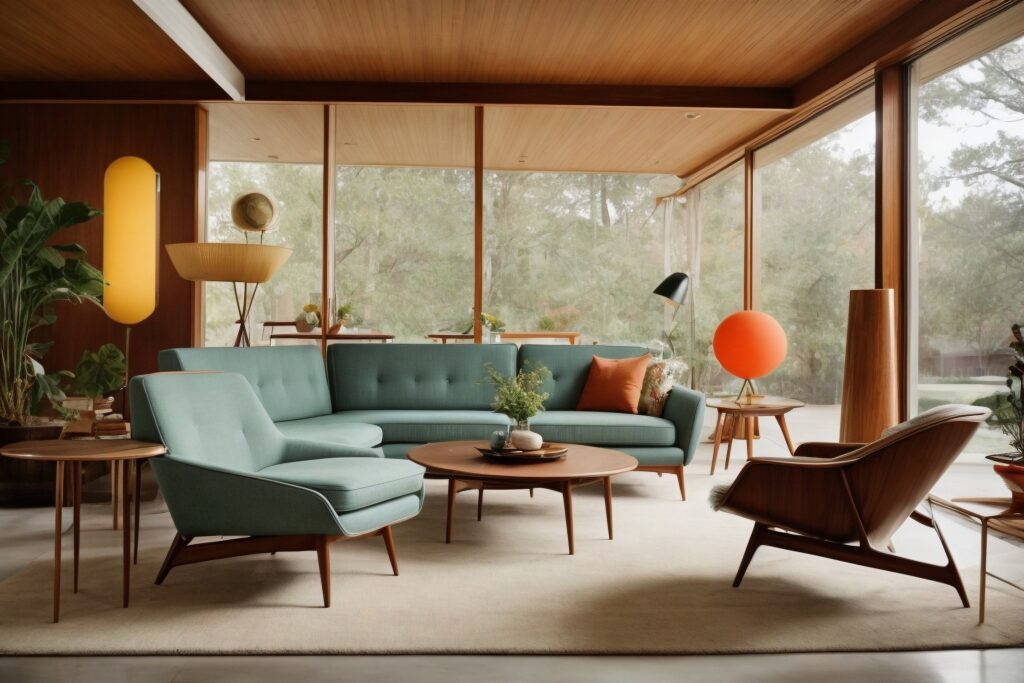
To truly appreciate the Mid-Century Modern revival, it’s essential to grasp the historical context that birthed this influential design movement. Emerging in the post-World War II era, Mid-Century Modern design was a response to the changing socio-cultural landscape. Architects and designers sought to create a new visual language characterized by clean lines, organic forms, and a commitment to functionality. Influential figures like Charles and Ray Eames, Eero Saarinen, and George Nelson became synonymous with the movement, contributing iconic pieces that define the era.
The key characteristics of Mid-Century Modern aesthetics are distinctive and timeless. Clean lines, functional simplicity, and a focus on the beauty of natural materials are hallmarks of this style. The movement embraced both form and function, a departure from the ornate and excessive designs that preceded it. In understanding Mid-Century Modern, it becomes evident that its appeal lies not just in its historical significance but in its ability to seamlessly integrate into contemporary spaces.
The Appeal of Mid-Century Modern Style
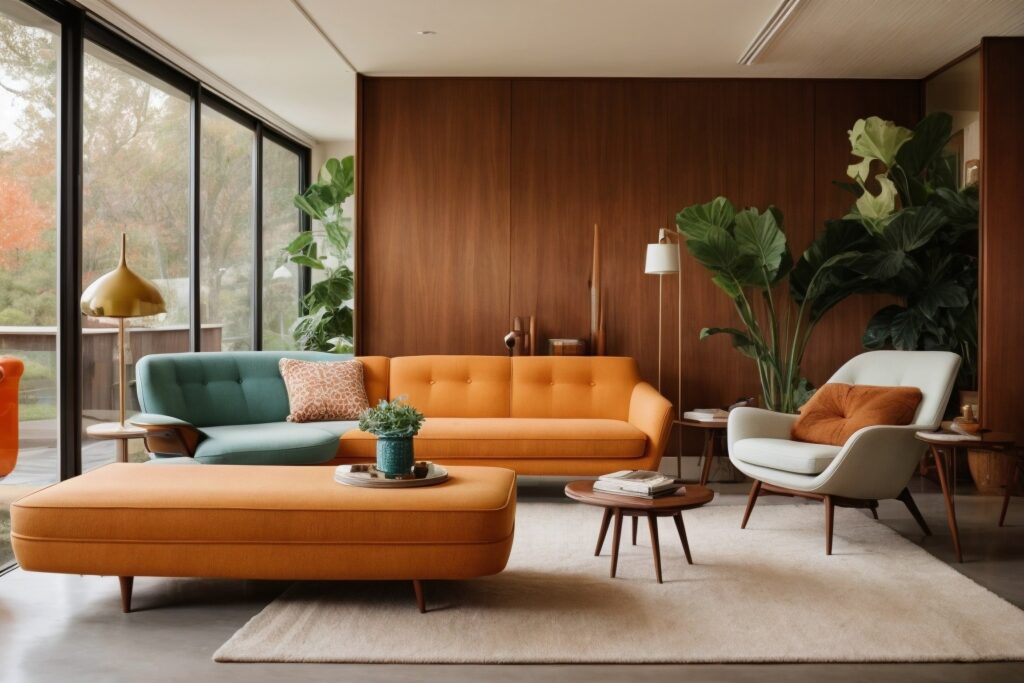
What makes the Mid-Century Modern style truly enduring is its timeless appeal. Decades after its inception, the clean lines and minimalist approach continue to captivate homeowners seeking a sophisticated and stylish atmosphere. The versatility of Mid-Century Modern design allows it to blend seamlessly with various interior themes, whether it be a sleek urban apartment or a cozy suburban home.
Beyond aesthetics, Mid-Century Modern design has a symbiotic relationship with contemporary values. The emphasis on simplicity aligns with the modern desire for minimalism and sustainability. In a world increasingly aware of environmental impact, the enduring appeal of Mid-Century Modern design is not only about style but also about a commitment to a more conscious way of living.
Essential Mid-Century Modern Furnishings

To infuse your home with Mid-Century Modern charm, it’s crucial to familiarize yourself with the iconic furnishings that define the era. The Eames Lounge Chair, with its luxurious leather and molded plywood, stands as a symbol of comfort and style. The Noguchi Table, with its sculptural presence, adds an artistic touch to any living space. These pieces, along with others like the Saarinen Tulip Table and the Wegner Shell Chair, represent the epitome of Mid-Century Modern design.
The color palette of Mid-Century Modern design is characterized by warm, earthy tones combined with vibrant, saturated hues. Mustard yellows, avocado greens, and teak browns dominate the color scheme, creating a cozy yet lively ambiance. Materials such as teak wood, molded plastic, and metal are frequently used, emphasizing both durability and a connection to nature.
Creating a Stylish and Sophisticated Home

Bringing Mid-Century Modern style into your home involves more than just acquiring iconic furnishings. It requires a thoughtful approach to design that balances the vintage aesthetic with modern sensibilities. In the living room, consider a statement piece like the Eames Lounge Chair paired with a sleek, minimalist sofa. The bedroom can benefit from the clean lines of a platform bed and a well-placed Arco Floor Lamp for a touch of drama.
Achieving a stylish and sophisticated Mid-Century Modern home extends beyond furniture. Lighting and accessories play a crucial role in elevating the overall aesthetic. Sputnik chandeliers, arc floor lamps, and abstract art can serve as focal points, adding depth and character to the space. The key is to maintain a sense of cohesion while allowing individual pieces to shine.
Shopping Guide for Mid-Century Modern Furniture
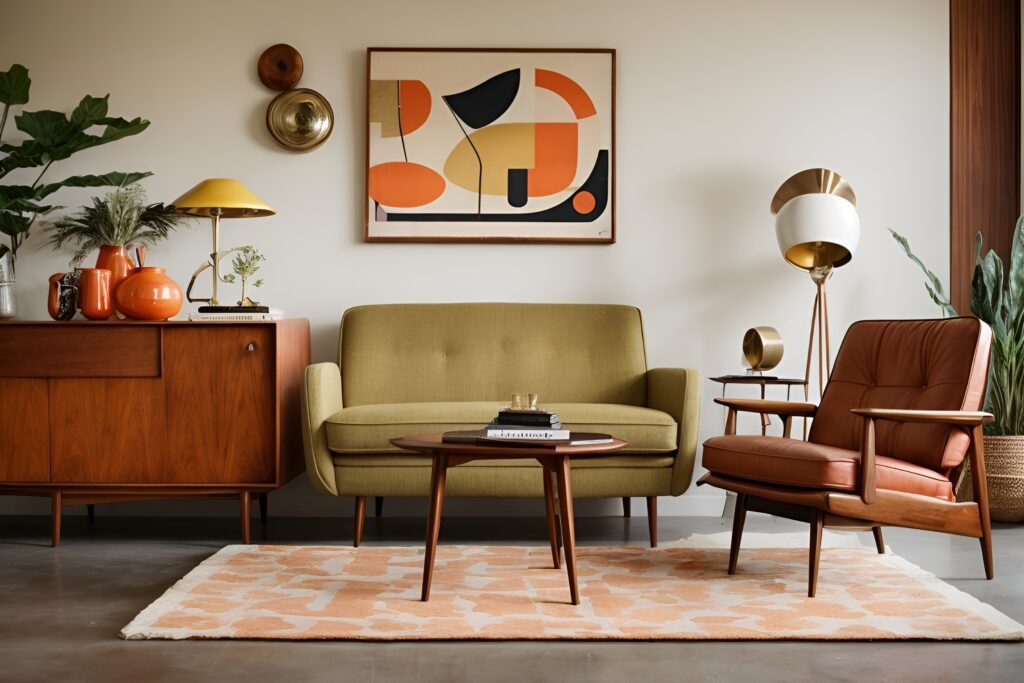
Embarking on a journey to curate a Mid-Century Modern home involves careful consideration of where to find authentic pieces. While vintage stores and auctions offer a chance to discover rare gems, reputable retailers also produce high-quality reproductions. Online marketplaces and specialty stores cater to various budgets, making it possible to achieve a Mid-Century Modern look without breaking the bank.
For those with a DIY inclination, repurposing vintage finds or engaging in restoration projects can add a personal touch to the Mid-Century Modern aesthetic. The beauty of this design style lies in its adaptability, allowing for a mix of authentic vintage pieces and contemporary alternatives to create a unique and personalized home.
Case Studies: Real Homes Embracing Mid-Century Modern
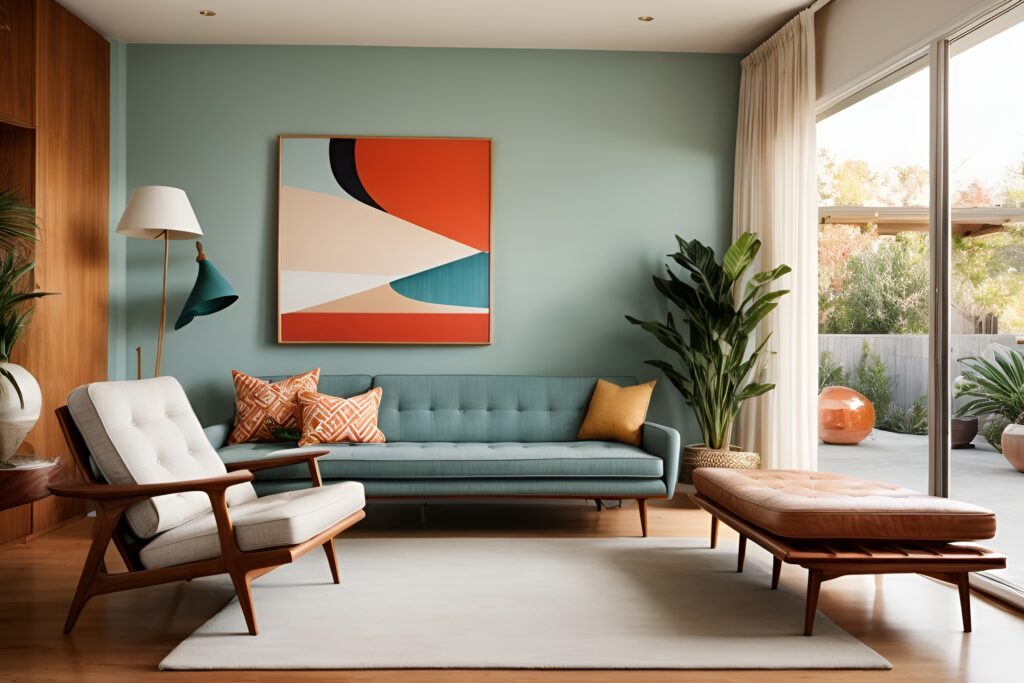
To provide real-world inspiration, let’s explore a few homes that have successfully embraced Mid-Century Modern design principles. In a sleek urban apartment, clean lines and a neutral color palette create an open and airy atmosphere. The incorporation of iconic furnishings like the Barcelona Chair and Nelson Bench adds a touch of sophistication without overwhelming the space.
On the other end of the spectrum, a cozy suburban home showcases how Mid-Century Modern design can adapt to different environments. The warmth of teak furniture, paired with vibrant accent colors, transforms the living space into a welcoming retreat. By blending vintage finds with modern elements, this home achieves a perfect balance of nostalgia and contemporary living.
Overcoming Challenges in Mid-Century Modern Design
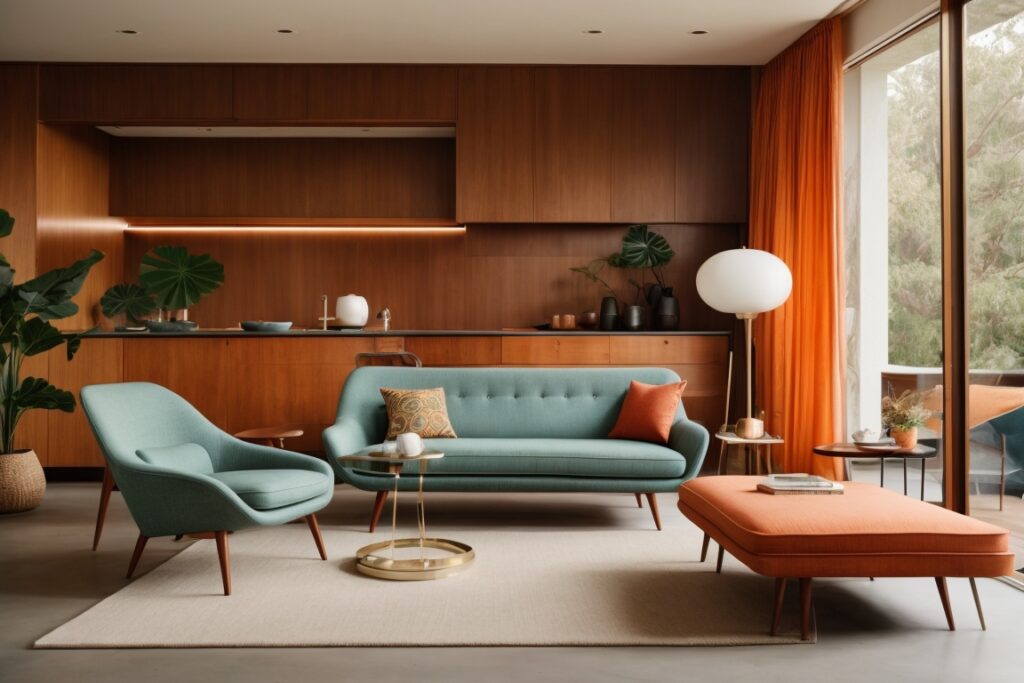
While the allure of Mid-Century Modern design is undeniable, it’s essential to address potential challenges. Common misconceptions, such as the perception that the style is too cold or sterile, can be overcome by incorporating textiles and accessories that add warmth. Concerns about practicality and comfort can be addressed by selecting pieces that prioritize both aesthetics and functionality.
Finding the right balance between authenticity and modern living needs is another challenge. While the Mid-Century Modern aesthetic is rooted in history, it’s crucial to adapt it to suit contemporary lifestyles. Integrating technology seamlessly and ensuring comfort in seating arrangements are ways to bridge the gap between the past and the present.
Sustainability and Mid-Century Modern Design
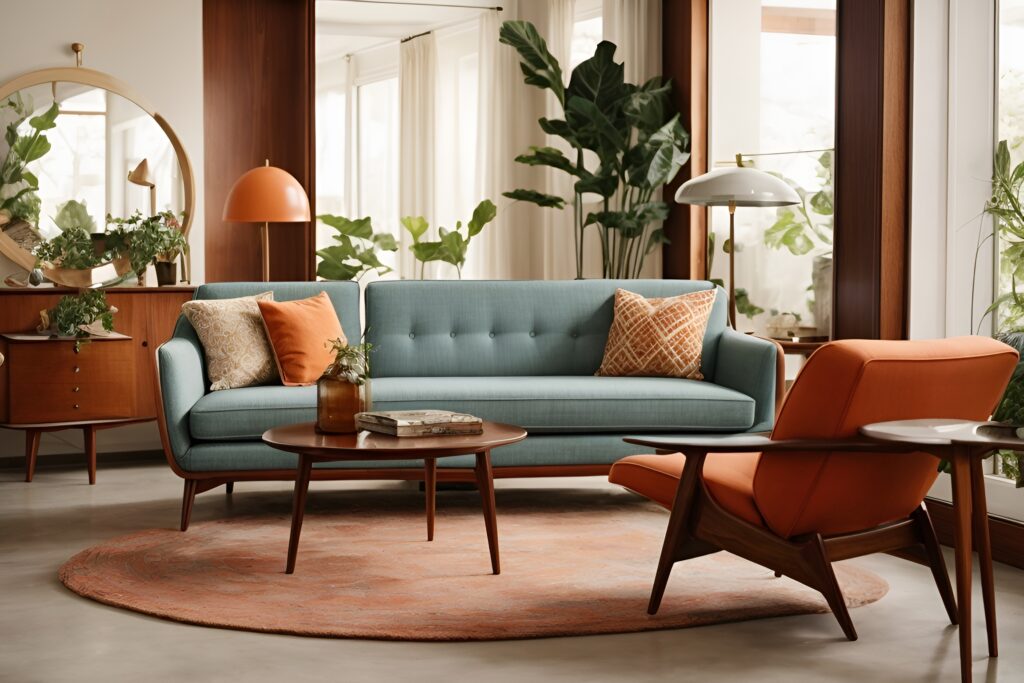
In an era where sustainability is a growing concern, the choice of furniture becomes more than just a stylistic decision. Mid-Century Modern design, with its emphasis on quality craftsmanship and durable materials, aligns with the principles of sustainability. Choosing pieces made from responsibly sourced wood, or recycled materials, or opting for vintage finds contributes to a more eco-friendly home.
The longevity of Mid-Century Modern furniture is a testament to its durability, reducing the need for frequent replacements. Investing in timeless pieces that withstand the test of time not only adds character to your home but also minimizes your environmental footprint.
Conclusion
As we conclude our journey into the world of Mid-Century Modern design, it becomes clear that this aesthetic is not just a trend but a timeless expression of style and sophistication. The clean lines, functional simplicity, and enduring appeal of Mid-Century Modern furnishings offer a canvas for creating homes that are both elegant and comfortable. Whether you’re a seasoned enthusiast or a newcomer to this design movement, the Mid-Century Modern revival invites you to explore, experiment, and create a home that transcends the boundaries




